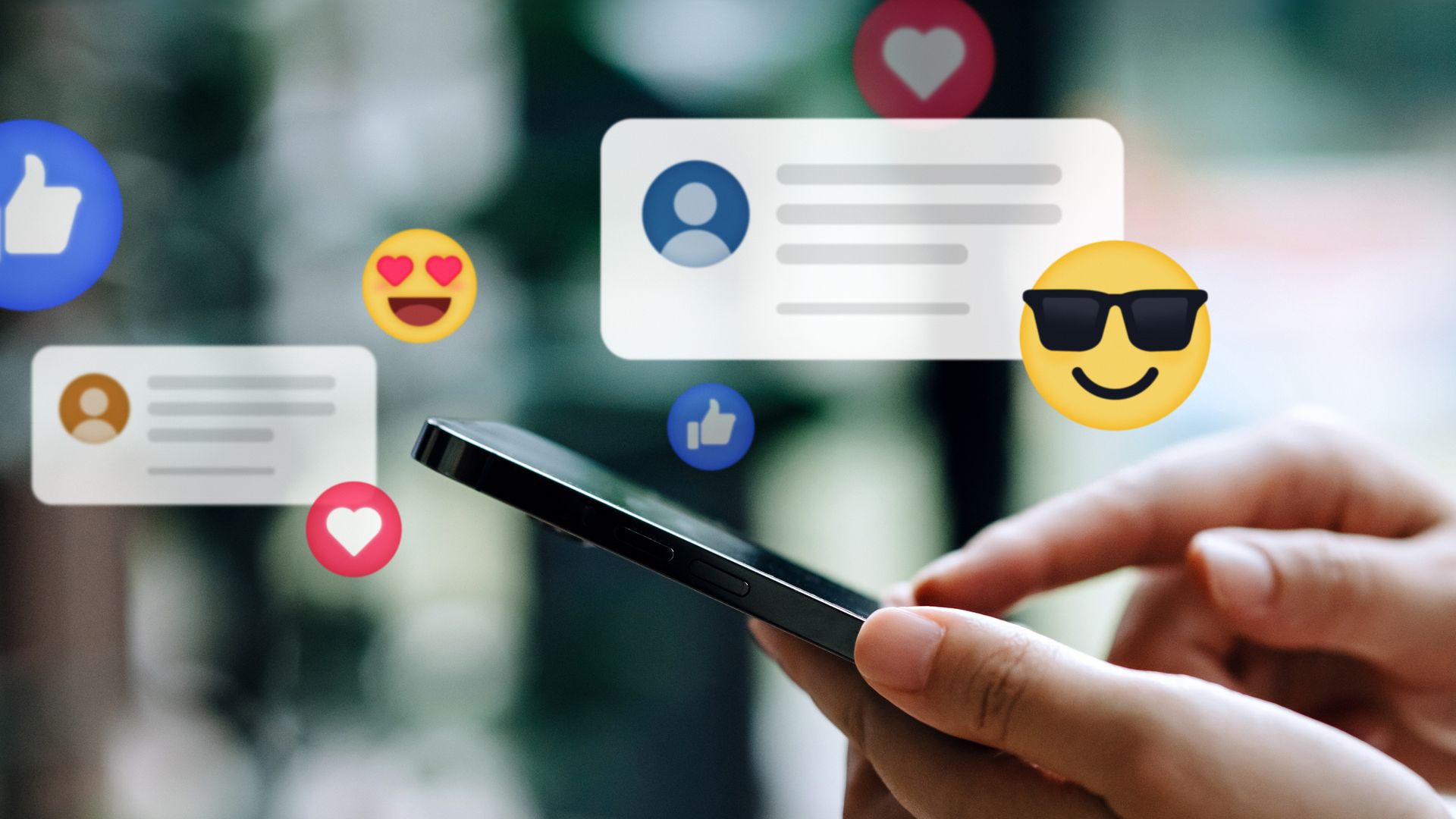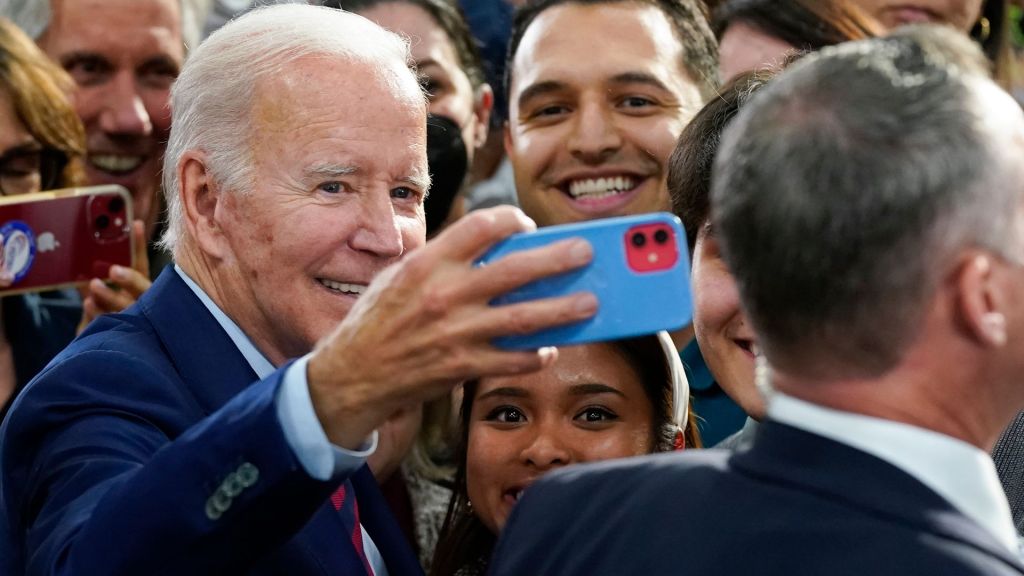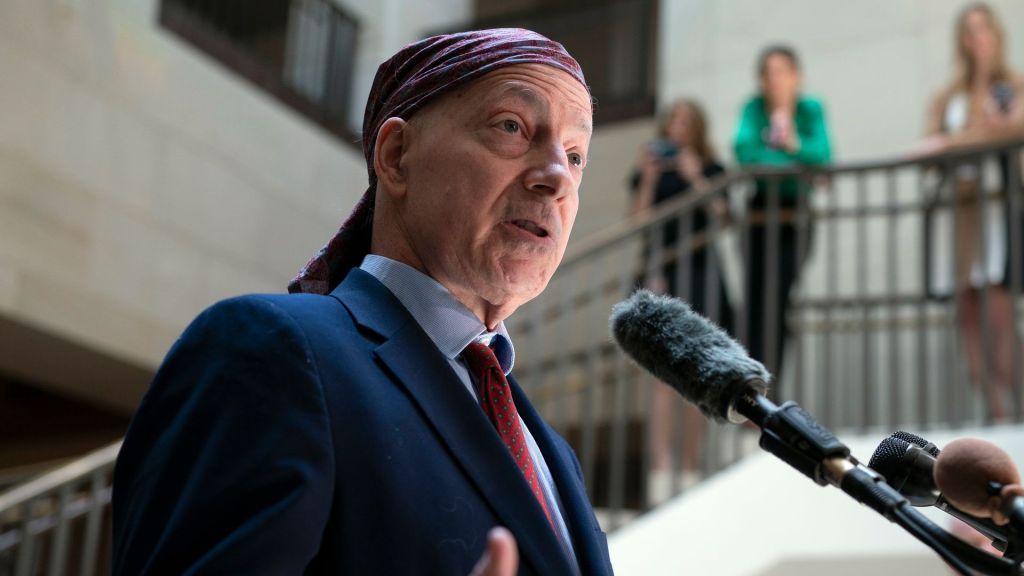
IS CENSORSHIP A PARTISAN ISSUE?
ACCORDING TO A RECENT POLL – IT IS.AND NOW THE SUPREME COURT COULD BE POISED TO CHANGE CENSORSHIP LAWS AS WE KNOW IT.
LET’S BREAK DOWN THE NUMBERS FROM ‘REAL CLEAR POLITICS’
THEY LOOKED AT HOW PEOPLE FEEL ABOUT THE ISSUE – ALONG PARTY LINES.
A MAJORITY OF DEMOCRATS (52%) BELIEVE THE GOVERNMENT HAS A RIGHT TO CENSOR SOCIAL MEDIA CONTENT.
WHILE ONE THIRD (33%) OF REPUBLICANS BELIEVE THE GOVERNMENT HAS SUCH AUTHORITY.
74% OF REPUBLICANS BELIEVE SPEECH SHOULD BE **LEGAL UNDER ANY CIRCUMSTANCES.
WHILE 47% OF DEMOCRATS FELT THE SAME WAY.
34% OF DEMOCRATS SAY AMERICANS HAVE **TOO MUCH FREEDOM.
WHILE NEARLY HALF(46%) OF REPUBLICANS SAY AMERICANS HAVE TOO **LITTLE FREEDOM.
DEMOCRATS WERE MORE LIKELY TO FAVOR THE GOVERNMENT’S INVOLVEMENT IN POLICING FREE SPEECH IN THE NAME OF NATIONAL SECURITY OR PUBLIC SAFETY.
REPUBLICANS WERE MORE LIKELY TO VIEW THE GOVERNMENT’S INVOLVEMENT –
AS INTERFERENCE.
THE DEBATE OVER CENSORSHIP IS EVOLVING AND SOCIAL MEDIA HAS ONLY INTENSIFIED THE DISCUSSION.
THIS DIVIDE ACROSS SOCIAL MEDIA NETWORKS – AND POLITICAL PARTIES – COULD FORCE THE HAND OF THE SUPREME COURT TO “RE-INTERPRET THE FIRST AMENDMENT” FOR THE DIGITAL AGE.
WHICH THE HIGHEST COURT MIGHT BE CLOSE TO DOING GIVEN CURRENT LEGAL CHALLENGES PLAYING OUT IN THE COURTS.
WHILE BIG TECH IS NOW A PERVASIVE PART OF OUR DAILY LIVES – IT’S ONLY BEEN AROUND FOR A RELATIVELY SHORT TIME. FACEBOOK WAS LAUNCHED IN 2004.
YOUTUBE IN 2005.
TWITTER – 2006.
AND INSTAGRAM IN 20-10.
THE LAW WHICH PROVIDES THE FRAMEWORK FOR “CONTENT MODERATION” RULES WAS CREATED **BEFORE THESE PLATFORMS EVEN EXISTED – IN 1996 –
KNOWN AS “SECTION 2-30”.
IT LARGELY PROTECTS COMPANIES FROM BEING RESPONSIBLE FOR WHAT OTHER PEOPLE POST ON THEIR PLATFORM –
AND IT GIVES THOSE PLATFORMS THE **DISCRETION OVER WHAT THEY WANT TO DO WITH WHAT PEOPLE POST.
AN EARLY TEST OF MODERATION POLICY CAME IN THE FORM OF A PUBLIC EXECUTION – POSTED ON YOUTUBE.
ONE YEAR AFTER YOUTUBE’S LAUNCH –
A VIDEO SURFACED ON THE PLATFORM THAT SHOWED THE HANGING OF IRAQI PRESIDENT SADDAM HUSSEIN.
THE AMATEUR VIDEO WAS SECRETLY CAPTURED ON A CELL PHONE AND POSTED TO YOUTUBE 16 YEARS AGO – AND CAN **STILL BE FOUND ON THE PLATFORM TODAY.
THERE WAS BACKLASH OVER THE VIDEO BEING PUBLIC FOR ANYONE TO SEE –
GIVEN ITS GRAPHIC AND VIOLENT NATURE.
GOOGLE’S DEPUTY GENERAL COUNSEL HAD FINAL SAY OVER WHETHER THE VIDEO NEEDED TO BE CENSORED.
YEARS LATER AT A PRESS CONFERENCE IN 2018 – A MEMBER OF THE PANEL EXPLAINED THE DECISION-MAKING BEHIND NOT REMOVING THE EXECUTION.
“We had sort of this no graphic violence images rule which applied to those videos but thankfully we had a team that escalated that question, like look at this and what do we do? We ended up deciding the video of the execution was a historical moment and it was actually important for it to be seen and preserved.
TWO YEARS LATER – ANOTHER EARLY-ON CENSORSHIP CONTROVERSY – THIS TIME IN 2008 ON FACEBOOK – THE PLATFORM AT THE TIME – ONLY THREE YEARS OLD.
“Websites are full of photos unretouched that women claim were deleted by facebook. Some women claim their accounts were suspended.”
FACEBOOK WAS TAKING DOWN BREASTFEEDING PHOTOS FOR VIOLATING ITS RULES AGAINST NUDITY.
AFTER MUCH UPROAR –
FACEBOOK REVERSED COURSE – ISSUING A STATEMENT SAYING IT AGREED “BREASTFEEDING IS NATURAL AND BEAUTIFUL.”
AND CHANGED ITS CENSORSHIP POLICIES.
FAST FORWARD TO THE 20-16 PRESIDENTIAL ELECTION – THE LARGEST **POLITICAL DIVIDE OVER THE ISSUE WOULD SURFACE –
FACEBOOK WAS AGAIN IN THE CROSSHAIRS.
FACEBOOK WAS FOUND TO BE SUPPRESSING RIGHT-WING NEWS CONTENT –
MARK ZUCKERBERG WOULD FIRE EMPLOYEES HE SAID WERE RESPONSIBLE FOR CHERRY PICKING WHAT WAS VISIBLE TO USERS AND ISSUED AN APOLOGY.
{“Why is facebook censoring conservative bloggers like diamon and silk, facebook called them unsafe. They hold conservative views, that’s not unsafe.”
“Congressman, in that case, our team made an enforcement error and we have already gotten in touch with them to correct it.”}
THE OTHER GLARING ISSUE AT THE TIME – THE PROLIFERATION OF FAKE NEWS ON THE PLATFORM.
DEMOCRATS BELIEVED THIS HELPED GET DONALD TRUMP ELECTED AS PRESIDENT.
ZUCKERBERG CALLED THE ISSUES SURROUNDING THE 20-16 ELECTION ONE OF FACEBOOK’S BIGGEST REGRETS –
IN 20-17 – THE SOCIAL NETWORK ADDED 3-THOUSAND EMPLOYEES TO NEARLY DOUBLE ITS STAFF FOR MONITORING AND MODERATING CONTENT.
“Zuckerberg reassured users the issue is being addressed. And he outlined a number of steps, among them facebook is now reaching out to fact checking organizations for verification he also said warnings will be issued for articles deemed questionable by the community.”
CENSORSHIP BECAME CENTRAL TO SOCIAL MEDIA IN 20-20 – DURING ANOTHER ELECTION YEAR AND THE PANDEMIC.
ON YOUTUBE – WHILE AN EXECUTION WAS ACCEPTABLE CONTENT –
VIDEOS AGAINST COVID VACCINES WERE **NOT.
IN 20-20 – YOUTUBE REMOVED MORE THAN ONE MILLION VIDEOS RELATED TO COVID.
“First of all we want to make sure that if there’s information that violates our policies – we came up with 10 policies around covid. Then, if its a violation of policies, then that’s something we’ll remove. We removed over one million videos associated with covid. But we also want to make sure we’re raising up information that would come from trusted and authoritative sources.”
ZUCKERBERG SAID IN THE FIRST 18 MONTHS OF THE PANDEMIC – FACEBOOK REMOVED 20 MILLION PIECES OF COVID-RELATED CONTENT.
VIDEOS THAT SHOWED PEOPLE BREAKING SOCIAL DISTANCING GUIDELINES.
REMOVED.
VIDEOS THAT REFERRED TO THE PANDEMIC AS A PLAN-DEMIC.
REMOVED.
HYDROXYCHLOROQUINE, THE ORIGINS OF COVID, AND COVID-19 VACCINES –
WERE IN SOME SHAPE OR FORM CENSORED, LABELED, OR REMOVED FROM A VARIETY OF PLATFORMS.
AND SOME PLATFORMS CONTINUE TODAY.
SIMULTANEOUSLY IN THE MONTHS LEADING UP TO THE ELECTION –
TALKS OF A RIGGED ELECTION ALSO BECAME FORBIDDEN.
FOR THE FIRST TIME – TWITTER SLAPPED A “FACT CHECK LABEL” ON A TWEET FROM PRESIDENT TRUMP WARNING OF MAIL-IN BALLOT FRAUD.
HIS ACCOUNT WOULD BE BANNED OUTRIGHT IN 20-21.
ONE OF THE MORE PIVOTAL MOMENTS IN THE TUG-OF-WAR OVER FREE SPEECH AND CENSORSHIP CAME WHEN THE NEW YORK POST PUBLISHED THE INFAMOUS “HUNTER BIDEN LAPTOP” STORY – THAT REVEALED AN ARRAY OF ILLICIT MATERIALS LINKED TO THE THEN-PRESIDENTIAL-HOPEFUL’S SON.
THAT ARTICLE WAS SUPPRESSED. BUT THE REPORT LATER TURNED OUT TO BE TRUE.
TEXAS SENATOR TED CRUZ GRILLED TWITTER CEO JACK DORSEY WEEKS AFTER IT BECAME KNOWN THE STORY WAS CENSORED.
“Mr dorsey, who the hell elected you and put you in charge of what the media are allowed to report and what the american people are allowed to hear and why do you persist on behaving as a democratic superpac silencing viewing on the contrary of your political beliefs?”
“We’re not doing that,that’s why I opened this hearing for calls of more transparency, we realize we need to earn trust more.”
DORSEY WOULD EVENTUALLY APOLOGIZE FOR WHAT HE DESCRIBED AS AN HONEST MISTAKE.
AND FACEBOOK’S ZUCKERBERG WOULD ADMIT HIS COMPANY “GOT IT WRONG” AS WELL.
BUT UNDER THAT “SECTION 2-30” PROVISION WE DISCUSSED AT THE TOP OF THIS STORY –
THE SOCIAL MEDIA COMPANIES **CAN GET IT WRONG.
THEY ARE **PROTECTED TO PICK AND CHOOSE WHAT CONTENT IS SEEN AND HIDDEN WITHOUT CONSEQUENCE.
{ELON MUSK TAKEOVER VO}
IN 20-22 TECH BILLIONAIRE ELON MUSK ACQUIRED TWITTER – IN PURSUIT OF A FREE SPEECH PLATFORM.
HE SPILLED THE SECRETS BEHIND THE COMPANY’S CONTENT MODERATION POLICIES IN A SERIES OF “TWITTER FILES.”
THOSE CONSISTED OF INTERNAL EMAILS AND DOCUMENTS CONCERNING THE DECISION-MAKING BEHIND THE CENSORSHIP OF THE HUNTER BIDEN LAPTOP STORY.
HOW TWITTER USES ITS TOOLS TO LOWER THE VISIBILITY OF LARGELY RIGHT-LEANING ACCOUNTS.
AND WHY TWITTER CENSORED AND REMOVED PRESIDENT TRUMP’S TWITTER ACCOUNT.
MUSK WOULD RE-INSTATE BANNED ACCOUNTS – INCLUDING TRUMP’S EARLIER THIS YEAR ON THE PLATFORM THAT HAS SINCE BEEN RE-BRANDED AS “X”.
THIS YEAR – CONTENT MODERATION HAS BEEN IN THE SPOTLIGHT.
LAST MONTH – A FEDERAL APPEALS COURT RULED THE BIDEN ADMINISTRATION LIKELY VIOLATED THE FIRST AMENDMENT WHEN IT WAS PRESSURING SOCIAL MEDIA COMPANIES TO CENSOR COVID-19 POSTS.
FACEBOOK’S CEO ADMITS GOVERNMENT OFFICIALS EXPRESSED THEIR CONCERNS OVER WHAT WAS SAID ONLINE.
“If you’re told you can’t say something I mean, that’s bad, that violates your…sense and freedom of expression at some level.”
“There are obviously a lot of people who think we should be censoring more content.there’s a lot of people who think we should censor less content.”
AND NOW –
THE SUPREME COURT IS BACK IN SESSION AND ON THE DOCKETT –
TWO SOCIAL MEDIA CENSORSHIP CASES.
THE TWO STATE LAWS FROM TEXAS AND FLORIDA – TEMPORARILY BLOCKED WHILE LEGAL CHALLENGES PLAY OUT —
WOULD “SEVERELY LIMIT” THE ABILITY OF SOCIAL MEDIA COMPANIES TO BAN CONTENT **AND BAN USERS.
ALREADY THOSE LAWS HAVE BEEN INTERPRETED DIFFERENTLY BY COURTS.
ONE APPELLATE COURT STRUCK DOWN FLORIDA’S LAW – WHILE ANOTHER COURT UPHELD THE SIMILAR TEXAS LAW.
“they are not held to the first amendment the first amendment restricts government from imposing conditions on the speech of us as individuals, the church, and facebook and youtube…in another words the first amendment protects them from you. It does not protect the rest of us from those companies.”
IT’S AN ISSUE SOME SUPREME COURT JUSTICES HAVE RECENTLY SOUNDED OFF ABOUT.
IN 2021 JUSTICE CLARENCE THOMAS COMPARED SOCIAL MEDIA **COMPANIES TO COMMUNICATION **UTILITIES –
ACKNOWLEDGING DIGITAL PLATFORMS HAVE AN “ENORMOUS CONTROL OVER SPEECH.”
AND EARLIER THIS YEAR JUSTICE SAMUEL ALITO SAID IT IS NOT “OBVIOUS HOW OUR EXISTING LAWS – WHICH PREDATE THE AGE OF THE INTERNET – SHOULD APPLY TO LARGE SOCIAL MEDIA COMPANIES.”
RULINGS ON THESE CASES AREN’T EXPECTED UNTIL NEXT YEAR.
BUT A DECISION BY THE HIGH COURT **COULD TRANSFORM THE WAY THE FIRST AMENDMENT IS INTERPRETED WITH REGARDS TO ONLINE SPEECH.
FOR NOW –
THE PLAYBOOK STANDS.
LAST MONTH INSTAGRAM’S MESSAGING APP “THREADS” BLOCKED ITS USERS FROM SEARCHING COVID-RELATED CONTENT.
THE WORDS “CORONAVIRUS” “VACCINES” AND “VACCINATION” ARE ALL BLOCKED SEARCHES.
META – THE PARENT COMPANY – SAID THE SEARCH FUNCTION WOULD BE UPDATED ONLY WHEN THEY ARE CONFIDENT IN THE **QUALITY OF WHAT POSTS POP UP IN THE RESULTS.
SOCIAL MEDIA HAS GROWN EXPLOSIVELY IN 2 DECADES.
AND IT SEEMS THAT NOW – CENSORSHIP AND THE POLICIES AROUND IT – ARE IN THE CROSSHAIRS.
EACH ELECTION CYCLE SINCE 2016 HAS ACCELERATED THE ISSUE – AND WITH THE ADVENT OF AI – EVEN THE VALIDITY OF IMAGES HAS BEEN CALLED INTO QUESTION.
RAISING NEW CONCERNS ABOUT WHAT KIND OF INFLUENCES THESE MASSIVE PLATFORMS WILL HAVE IN 2024.








